Tips and Tricks: Introducing Tabletop RPGs With Interactive Storytime
Introducing tabletop role playing games (TTRPGs) to little kids
Introducing tabletop RPGs to young kids (about under the age of 5) can be difficult. Sometimes, the mechanics don’t click. Sometimes they aren’t ready to play as another character. Sometimes, they just don’t know what you are doing.
Instead of jumping straight into a tabletop RPG, you can try to slowly introduce the concept of a role playing game to your kid through storytelling and play. Kids naturally play and listen to us reading a book or telling stories, so we can combine those to do play and stories at the same time and start turning it into a game.
I started with my son when he was 2 years old by doing what I call “interactive storytime” and, along with this article, I have published a game called StoryGuider on ich.io to get you started!
Jump to:
- What is interactive storytime?
- How do you create and play a story?
- Some tips and tricks to add
- Use StoryGuider to help!
- Overall
What is interactive storytime?
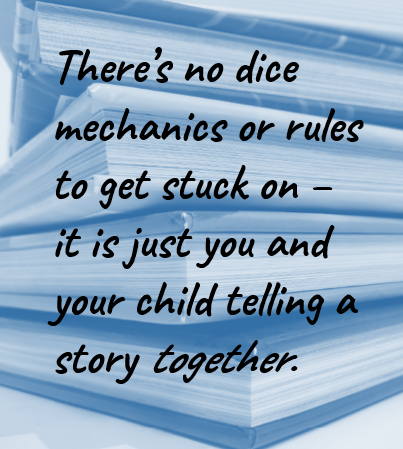
Interactive storytime is like a tabletop RPG but you only do the role-playing (RP) part. There’s no dice mechanics or rules to get stuck on – it is just you and your child telling a story together.
You are the storyteller and explain what happens. However, unlike just reading a book, you ask your child questions about what the main character should do next.
This helps your child connect with the character in the story and get used to the idea that they can change things without having to worry about remembering rules, knowing numbers, etc. It ends up being a good transition into trying out other tabletop RPGs (so, games that have rules/mechanics) later since the RP will at least already be familiar.
It also helps in other areas of life with decision-making, problem-solving, and learning cause-and-effect… but that’s probably going to be a whole other article.
How do you create and play a story?
Interactive storytime is very freeform, but here is a guide for helping you come up with and continue a story with your child! This guide isn’t meant to be restrictive in any way, just a tool to help you come up with some ideas and to help with tracking the story a bit. I prefer having a little structure because of how I personally work and plan, so this helps me to find good method to allow both freedom and a little bit of an outline when running a story game with my kid.
Step 1: Pick a topic for your story
Choose a story topic that is easy for your child to connect with and that you can come up with enough material for.
Some good places to start are:
- Retell one of your kid’s favorite movies, TV shows, or books
- Tell a story about one of your kid’s toys
- Use a regular tabletop RPG plot hook list but change the tone to be kid-friendly
- Ask your child if they have an idea
Bonus: when I started, I chose characters from kids movies that my son hadn’t seen yet… it blew his mind when we eventually watched the movie!
To help a little more with this, I wrote a follow up article here that goes into more detail and ideas!
Step 2: Prepare a simple plot
Keep your prep simple… treat this like an improv-heavy one shot. There doesn’t need to be interweaving plot lines or traps or ulterior motives for the first time you bring this to your child.
Here’s an example of what I did for my kid’s first interactive storytime to help give some example framework:
- Choose a start and end point
Start: The magician gets a letter from the king to perform at his birthday party
End: The magician pulls off a funny magic show
- Think of a few events that can bridge those points
- The magician needs to pack
- The magician needs to travel through the woods to the castle
- Once they’re at the castle, the magician gets nervous
- The magician needs to perform a few tricks
And that is about all the prep I did because I wanted my kid to fill in the rest of the gaps and questions with me. My kid would also probably end up getting overwhelmed or losing interest if I did anything more complex.
Step 3: Ask your child questions
When you get to one of the events in the story, ask your child a question about what the character should do. For the first time doing this, it can help to give a few suggestions within the questions to help your child get used to picking.
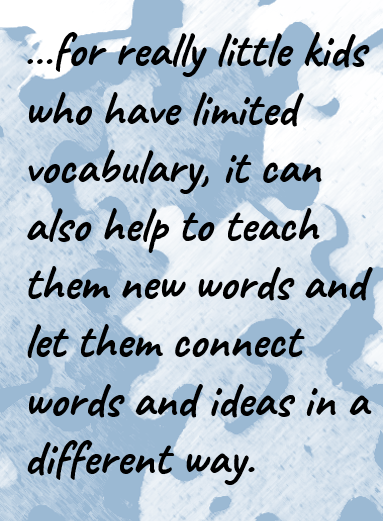
Asking “what should the magician pack?” is probably OK for an older kid or a kid used to role playing game elements.
For the first few storytimes, something like “The magician is running out of room in his bag and can only pack one more thing… Should he pack an extra snack? Or should he bring his lucky rabbit stuffed animal?”
This gives some options, and for really little kids who have limited vocabulary, it can also help to teach them new words and let them connect words and ideas in a different way.
Step 4: Let your child answer
This is the whole reason for doing this… let your child answer.
Give them time, let them ask you questions about the choices presented, and encourage them or let them know they did well when they made a decision.
If your child isn’t answer the questions asked:
If they won’t choose or they say, “I don’t know. I want daddy to pick”, try to calmly talk to them about why they don’t want to pick.
Maybe this is just totally new and they don’t understand.
Maybe they don’t want something bad to happen to the character.
Maybe they want to get the best answer.
Maybe they don’t feel confident in themselves or are just scared about making a decision.
If still they aren’t responding, that’s OK! It can take time to get used to this if previous they were only told stories instead of being asked about them.
So, if they really don’t want to pick, you can help them along while still introducing them to choice:
- Have your child flip a coin (if they’re old enough)
- Write options on slips of paper and have them pick it out of a box
- Put it into a choice generator
This still encourages choosing and shows that it is safe, but it takes away some of the pressure by randomizing it. It can still help your child learn that choices aren’t something to be afraid of and you can work their own choices in as they get more comfortable.
Step 5: Ask more questions… unless your child is done

Sometimes with little kids… you don’t always get to the end of the story. Maybe after the first two story points, the topic isn’t clicking with your child and they want to do something else. It is OK to end there or come back to it later.
This should be something fun and like a game, so you don’t want it to become a chore or something they will feel forced to do after losing interest.
Over time, they’ll probably be able to pay attention longer, and you’ll get more practice with storytelling. My kid and I started out doing ~5 minute stories and built up from there. It gets easier as kids get used to the ideas and get older.
Some tips or tricks to add to stories with your kid!
Here are some additional parts that I added when doing interactive storytime with my kid!
Let your child act it out
Let your kid pretend to chase the squirrel that stole their sandwich, command the boat (the couch), or yell at the king that the ogre was just trying to help. This helps get the wiggles out and is great that they are getting immersive with the role play!
Use props to reinforce the story
Another way to encourage role playing is to use props! Use their toys to represent characters, build a pillow fort castle, or let them dress up. This also helps emphasize that this is fun play-time and makes it special, particularly if you do it with them.
Draw the character or parts of the story
I have run into once in a while where my son has a hard time separating himself from the character, especially when he’s acting the story out. It helps for him to see, “oh, the magician is actually this guy on the paper”.
This is also a good way to break up parts of the story with coloring breaks. If their interest starts to wane, let them draw a picture of the treasure map or castle from the story so they have something else to focus on for a little bit.
Teach colors, numbers, etc
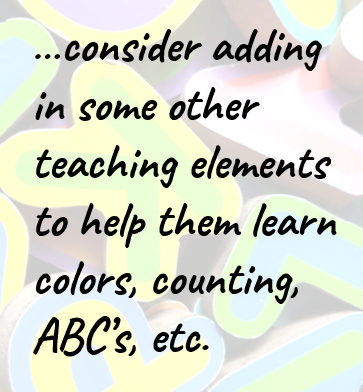
Once you and your child are comfortable with the role playing part of the game, consider adding in some other teaching elements to help them learn colors, counting, ABC’s, etc.
I would ask my kid to choose between a red or green apple that we colored on a sheet of paper or maybe the map was marked with numbers and letters for him to pick.
Because it is integrated into play and not just memorization exercises or straight educational activities, it has been way easier to get my kid to practice some of these educational bits and actually remember them.
Use StoryGuider to help come up with game ideas!
At about the same time that I’m releasing this article, I am also releasing a game on ich.io called StoryGuider. It gives you a story about The Magician’s Big Performance, an example playthrough of the story, and a blank template for using this method to make your own stories!
I wanted to make something that was affordable to everyone, so it is a pay-what-you-want (PWYW)/you can grab a free copy. It should be appropriate for your child as long as they are old enough to understand you and can respond to questions, either verbally or by pointing to pictures that you draw.
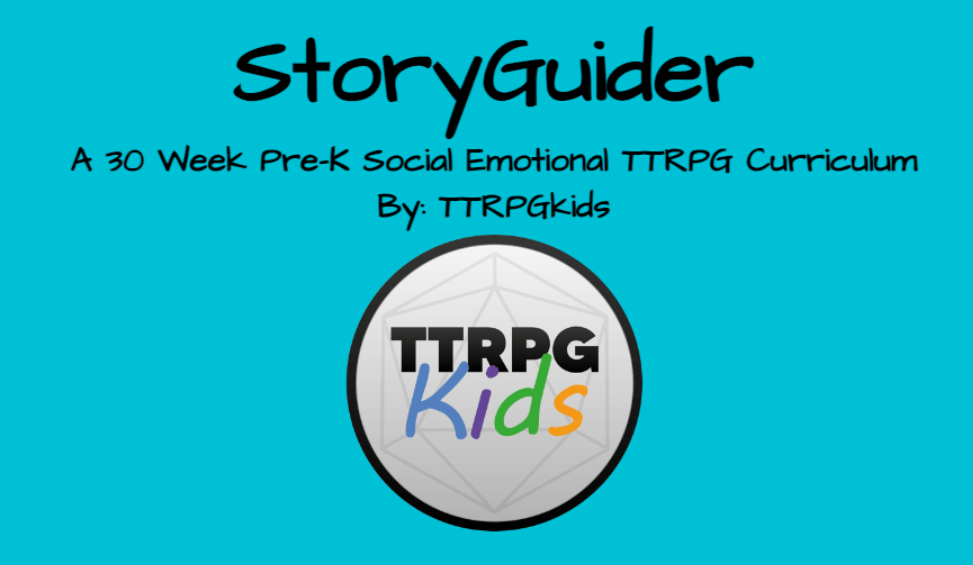
Going back over a year later too… since releasing this article, I have also written a full pre-K social emotional cirriculum’s worth of games using StoryGuider – you can find it here!
Overall thoughts on running interactive storytime with your kids:
I really hope you give this (either the overall method or the free game) a try, even just once. There’s a lot of benefits for your kid (developing critical-thinking, decision-making, self-confidence, etc), and it gives an amazing opportunity for you to bond with and understand your child. Sharing a hobby, a story, and a few laughs for even a 5 minutes can help brighten up a day and can mean the world to a child.
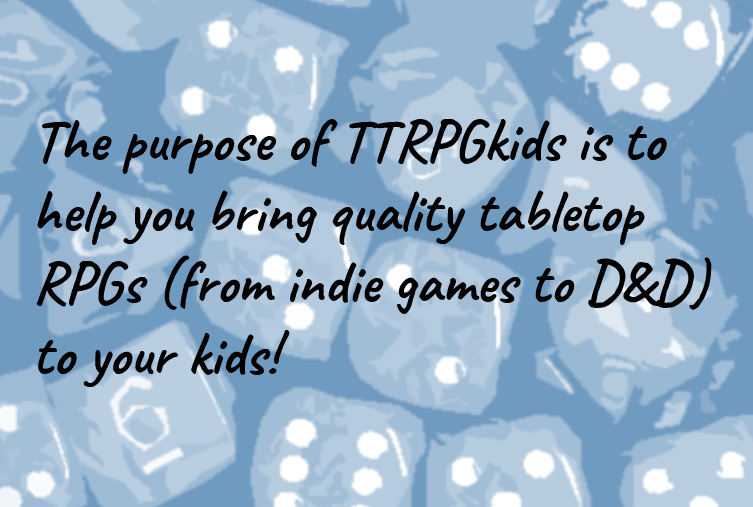
I really hope you found this article and our experiences helpful and, if you were considering starting tabletop RPGs with your kids, that this assists you in making that choice!
Please let me know in the comments if you have any questions or if this post helped, and make sure to subscribe to the TTRPGkids monthly newsletter to stay up to date on the latest reviews, tips and tricks, game and podcast list updates, and more! Thank you for playing tabletop RPGs with your kids and sharing this awesome hobby with the next generation!

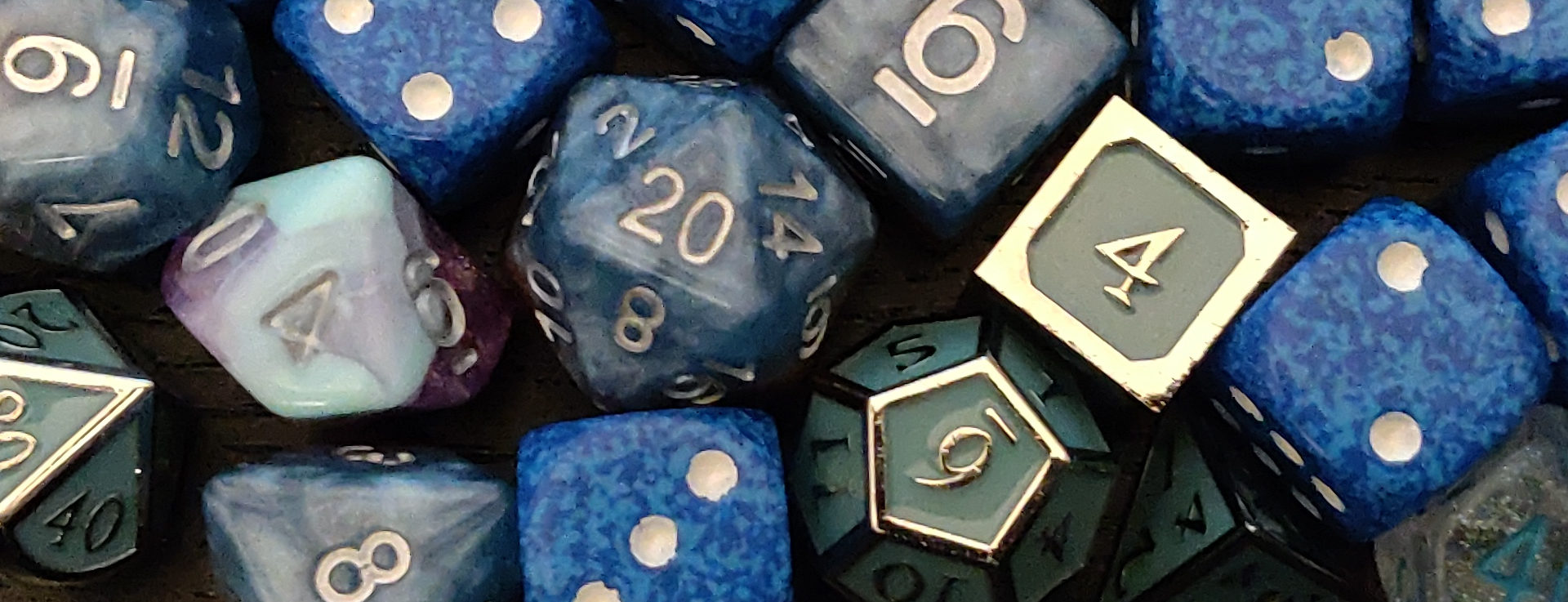

I did something similar but with the most basic rules, minis, and a map. It held my 4yo’s attention, but not my 2yo, and even then I sometimes lost my 4yo’s attention or accidentally directed him toward violence rather than soliciting his own natural reaction. For my 2yo, I’m excited about this system, as I think it will be what I need to keep him occupied enough to transition him to other kids games. For my 4yo, I’m excited to make use of some of your methods to solicit him to make choices, even in other games, and I think the coloring break will solve some attention span issues. Thank you!!!
For sure! I hope the tips help. Keeping my kid’s attention took quite a bit of trial and error, but we got such a cool bonding activity by the end. I am really happy to hear other parents using similar methods too – it is so much fun and so rewarding.